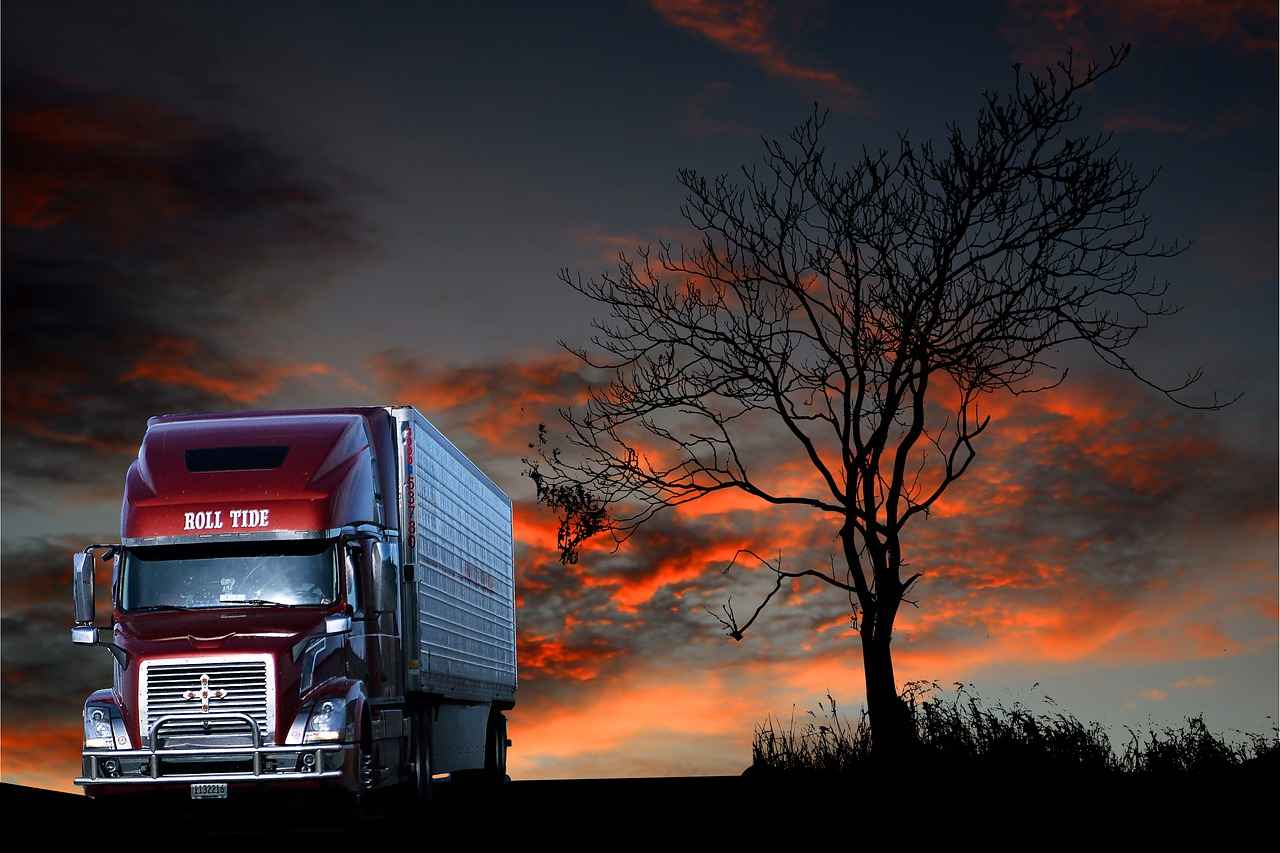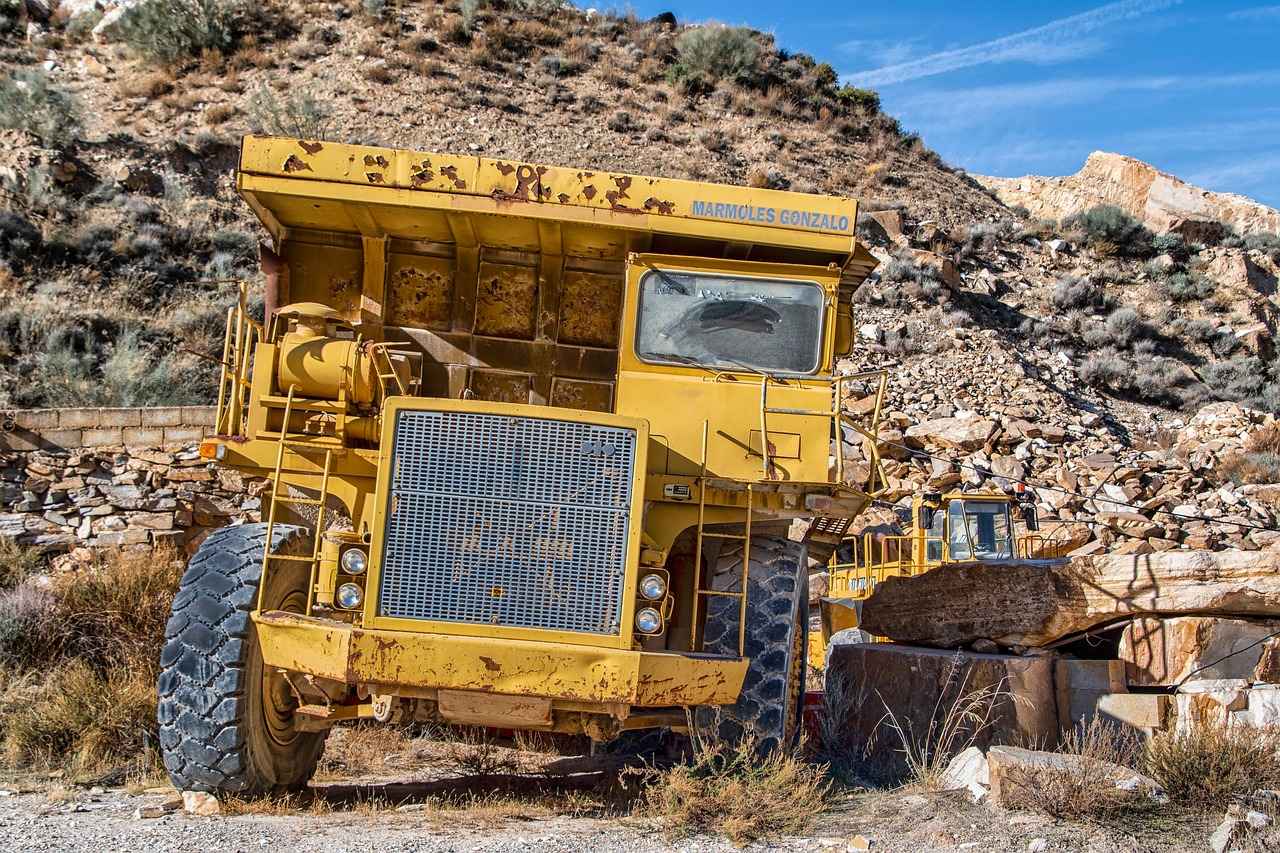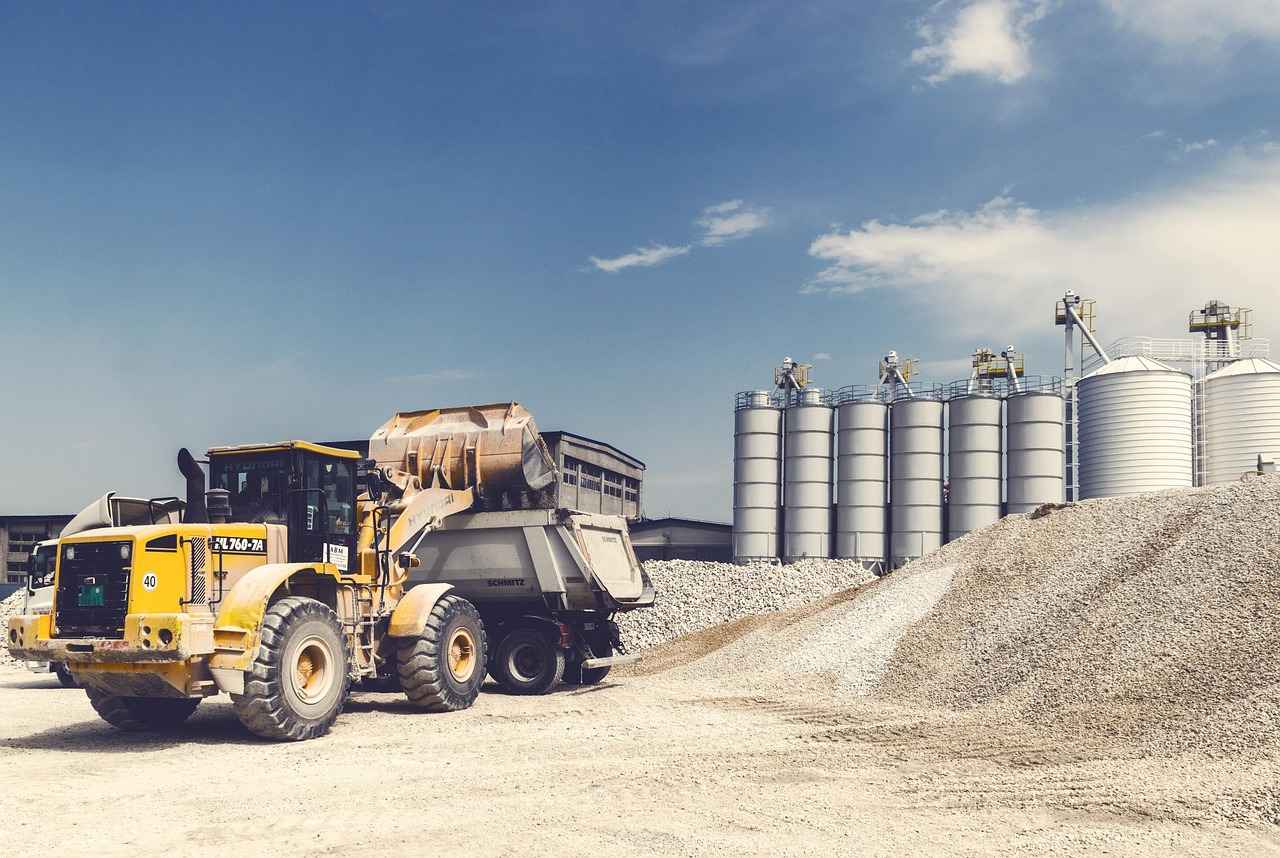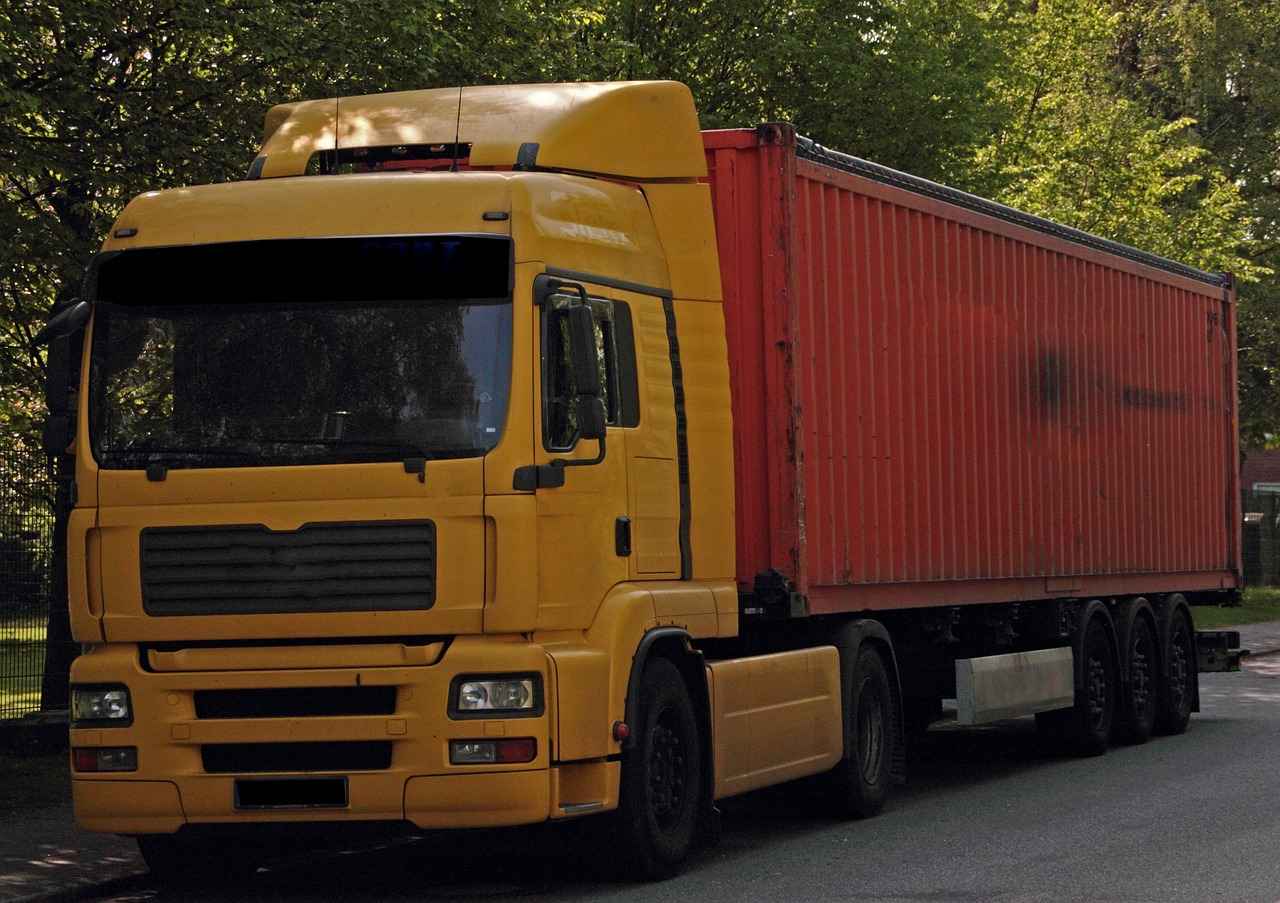Lifting a truck can be a transformative upgrade, enhancing both its aesthetics and off-road capabilities. However, understanding the costs associated with lifting a truck is essential for any truck owner considering this modification. In this article, we will delve into the various costs involved, including parts, labor, and additional factors that can influence the overall pricing.
The average costs for lifting a truck can vary widely based on several factors. Generally, truck lifting can range from $200 to over $5,000, depending on the type of lift kit you choose and the specific vehicle model. For instance, suspension lift kits tend to be on the higher end of the spectrum, while body lift kits are more budget-friendly.
Several key factors can impact the total cost of lifting a truck:
- Type of Lift Kit: The choice between suspension and body lift kits can significantly affect pricing.
- Labor Costs: Depending on your location and the complexity of the installation, labor costs can vary.
- Necessary Modifications: Additional modifications may be required for proper installation, which can add to the overall cost.
Understanding the different types of lift kits is crucial for making an informed decision:
- Suspension Lift Kits: These kits typically range from $1,000 to $5,000. They provide significant height increases and enhance off-road performance.
- Body Lift Kits: Ranging from $200 to $1,500, body lift kits offer a more modest lift and are generally easier to install, making them a popular choice for those on a budget.
Labor costs can vary, but expect to pay between $300 and $1,500 for installation, depending on the complexity of the lift kit and local labor rates. It’s advisable to get quotes from multiple shops to ensure you receive a fair price.
Beyond the lift kit and labor, there are several additional expenses to consider:
- Alignment Services: After lifting your truck, alignment is crucial for safe handling. This service typically costs between $75 and $100.
- Tire Upgrades: Lifting a truck often requires larger tires, which can add $800 to $2,000 to your overall cost. This is an important factor to include in your budget if you want improved performance.
Choosing the right lift kit is essential for achieving your desired results. Consider the following:
- Assess Your Truck’s Purpose: Determine how you plan to use your truck—whether for off-roading, daily driving, or towing—to guide your lift kit selection.
- Research Brands and Reviews: Look into various brands and read customer reviews to find a reliable lift kit that meets your budget and performance expectations.
By understanding the costs and factors associated with lifting a truck, you can make an informed decision that enhances your vehicle’s performance and appearance while staying within your budget. Proper research and planning will ensure that you achieve the lift you desire without unexpected expenses.

What Are the Average Costs of Truck Lifting?
Lifting a truck can be an exciting modification that enhances both its appearance and performance. However, before diving into this project, it is essential to understand the average costs associated with lifting a truck. This knowledge will help you make informed decisions and budget effectively.
Understanding the average costs is crucial for anyone considering lifting their truck. Prices can vary significantly based on the type of lift and the vehicle model. On average, truck lifting can range from $200 to $5,000, depending on various factors. Here’s a breakdown of what to expect:
- Lift Kits: The primary component of lifting a truck is the lift kit itself. Suspension lift kits generally cost between $1,000 and $5,000, while body lift kits can be more budget-friendly, ranging from $200 to $1,500.
- Labor Costs: Labor costs can add significantly to the total expense. Expect to pay anywhere from $500 to $1,500 for professional installation, depending on the complexity of the lift.
- Additional Modifications: Other modifications, such as alignment services and tire upgrades, can also contribute to the overall cost. Alignment services typically cost between $75 and $100, while larger tires can add an additional $800 to $2,000.
It’s important to note that the vehicle model plays a significant role in determining the overall cost. Some trucks may require more extensive modifications than others to achieve the desired lift height.
Several factors can impact the overall cost of lifting a truck:
- Type of Lift Kit: As mentioned earlier, the type of lift kit you choose will significantly affect the price. Suspension kits tend to be more expensive but provide better performance.
- Vehicle Model: The make and model of your truck can influence the cost due to the availability of parts and the complexity of the installation process.
- Labor Rates: Labor costs vary by region and shop. It’s wise to shop around for the best rates.
- Customization Needs: If your truck requires additional modifications, such as new shocks or brake lines, these can add to the overall cost.
Choosing the right lift kit involves careful consideration of your truck’s intended use and your budget:
- Assess Your Needs: Determine how you plan to use your truck. Off-road enthusiasts may benefit more from suspension lift kits, while daily drivers might find body lift kits sufficient.
- Research Options: Take the time to research various brands and read customer reviews. This can help you find a reliable lift kit that fits your budget and performance expectations.
In conclusion, understanding the average costs and factors influencing the price of lifting a truck is essential for anyone looking to make this modification. By carefully considering your options and budgeting accordingly, you can ensure that your truck lift project is both successful and satisfying.

What Factors Influence the Cost of Lifting a Truck?
Lifting a truck is an exciting modification that can enhance its performance and aesthetics. However, understanding the factors that influence the overall cost is essential for making an informed decision. In this article, we will delve into the various elements that affect the cost of lifting a truck, ensuring you have a comprehensive understanding before embarking on this project.
Several key factors can significantly impact the total cost of lifting a truck. These include:
- Type of Lift Kit: The choice of lift kit is one of the most crucial factors. There are two primary types: suspension lift kits and body lift kits. Suspension kits tend to be more expensive due to their complexity and the quality of materials used. Prices for suspension lift kits can range from $1,000 to $5,000, while body lift kits are more budget-friendly, typically costing between $200 and $1,500.
- Labor Costs: Labor costs can vary greatly depending on your location and the shop’s hourly rate. On average, you can expect to pay between $75 and $150 per hour for professional installation. The total labor cost can also be influenced by the complexity of the installation and any additional modifications required.
- Vehicle Modifications: Lifting a truck may necessitate additional modifications, such as new shocks, brake lines, or driveshaft adjustments. These modifications can add anywhere from $500 to $2,000 to the overall cost, depending on the vehicle’s specific needs.
- Tire Upgrades: A lifted truck often requires larger tires, which can significantly increase the overall expenditure. Expect to spend between $800 and $2,000 on new tires, depending on the brand and size.
- Alignment Services: After lifting, proper alignment is essential to ensure optimal handling and tire longevity. This service typically costs between $75 and $100 and is a necessary step to maintain your truck’s performance.
By considering these factors, truck owners can better estimate the total cost of lifting their vehicle. It’s essential to conduct thorough research and consult with professionals to understand the specific requirements for your truck.
Choosing the right lift kit is vital for maximizing the benefits of lifting your truck. Here are some tips:
- Assess Your Truck’s Purpose: Determine how you plan to use your truck. If you intend to use it for off-roading, a suspension lift kit may be more suitable, while a body lift kit could suffice for aesthetic purposes.
- Research Brands and Reviews: Not all lift kits are created equal. Researching reputable brands and reading customer reviews can help you find a kit that aligns with your budget and performance expectations.
- Consult Professionals: If unsure, consult with automotive professionals who can provide insights and recommendations based on your specific truck model and intended use.
In conclusion, lifting a truck involves various costs that can fluctuate based on several factors. Understanding these influences will help you budget effectively and make informed decisions, ensuring a successful and satisfying modification.
Types of Lift Kits and Their Prices
When it comes to enhancing your truck’s performance and appearance, lift kits play a crucial role. Understanding the different types of lift kits available can significantly impact your decision-making process. Below, we explore the various types of lift kits, their associated prices, and what you need to consider when selecting the right one for your vehicle.
- Suspension Lift Kits: These kits are designed to raise the entire suspension system of your truck. They typically range in price from $1,000 to $5,000, depending on the brand and quality. Suspension lift kits not only increase your truck’s height but also improve its off-road capabilities, making them ideal for adventurous drivers.
- Body Lift Kits: More budget-friendly than suspension kits, body lift kits range from $200 to $1,500. They provide a modest lift by raising the body of the truck away from the frame, which allows for larger tires without altering the suspension. This type is popular among those looking to enhance aesthetics without significant performance changes.
- Leveling Kits: These kits are designed to raise the front of the truck to match the height of the rear. Priced between $300 and $1,000, leveling kits are a great option for those who want a slight lift for improved handling and a more aggressive stance.
- Performance Lift Kits: Aimed at serious off-road enthusiasts, performance lift kits can cost anywhere from $2,000 to $10,000. They often include advanced suspension components and are engineered for optimal performance in rugged terrains.
The cost of lift kits can vary based on several factors:
- Quality of Materials: Higher-quality kits made from durable materials tend to be more expensive but offer better performance and longevity.
- Brand Reputation: Well-known brands often charge a premium for their products due to their established reliability and customer satisfaction.
- Installation Complexity: Kits that require extensive modifications or professional installation will add to the overall cost.
When planning to lift your truck, it’s essential to factor in additional costs that may arise:
- Labor Costs: Professional installation can add between $500 and $1,500 to your total expenses, depending on the complexity of the lift kit.
- Tire Upgrades: Lifting your truck often means upgrading to larger tires, which can range from $800 to $2,000.
- Alignment Services: After installation, an alignment is crucial to ensure proper handling, usually costing between $75 and $100.
Selecting the right lift kit involves considering your truck’s intended use:
- Off-Roading: If you plan on taking your truck off-road, a suspension lift kit may be the best choice for enhanced performance.
- Daily Driving: For those who primarily use their truck for commuting, a body lift or leveling kit may be sufficient.
- Budget Constraints: Always consider your budget and the total costs associated with installation and additional modifications.
In summary, understanding the different types of lift kits and their associated costs is essential for any truck owner looking to enhance their vehicle. By considering your specific needs and budget, you can make an informed decision that will improve both the performance and appearance of your truck.
Suspension Lift Kits
Lifting a truck can significantly enhance its performance and aesthetic appeal, making it a popular modification among truck enthusiasts. One of the most common methods to achieve this is through . These kits not only provide a noticeable height increase but also improve off-road capabilities, allowing for better clearance over obstacles and improved suspension travel.
Suspension lift kits typically range from $1,000 to $5,000, depending on various factors such as quality, brand, and the specific features they offer. The higher-end kits often include advanced technology and materials that contribute to better performance and durability.
Many truck owners opt for suspension lift kits because they offer significant height increases compared to other lift options. This added height can enhance the truck’s off-road capabilities, allowing it to tackle rugged terrains with ease. Additionally, it can improve the overall stance and look of the vehicle, making it more visually appealing.
- Quality of Materials: Higher-quality kits use superior materials, which can drive up the price.
- Brand Reputation: Well-known brands may charge more due to their established reliability and performance.
- Installation Complexity: Kits that require extensive modifications or specialized tools may incur higher labor costs.
There are several types of suspension lift kits available, each catering to different needs and budgets:
- Coil Spring Lift Kits: These kits replace the factory coil springs with taller ones, providing a smoother ride and improved handling.
- Leaf Spring Lift Kits: Commonly used in trucks, these kits replace or add to the existing leaf springs for added height and load capacity.
- Strut Spacer Kits: These kits use spacers to lift the front of the vehicle while maintaining the factory struts, making them a cost-effective option.
Labor costs for installing a suspension lift kit can vary significantly, typically ranging from $500 to $1,500. The complexity of the installation process will influence these costs. It’s advisable to have the lift kit installed by a professional to ensure proper alignment and functionality.
When budgeting for a suspension lift kit, it’s essential to consider additional costs:
- Alignment Services: After installation, an alignment service is crucial for optimal handling and tire wear, typically costing between $75 and $100.
- Tire Upgrades: Lifting a truck often necessitates larger tires, which can add $800 to $2,000 to your total expenses.
When selecting a suspension lift kit, consider your truck’s intended use, whether for off-roading, daily driving, or towing. Researching various brands and reading customer reviews can help ensure you choose a reliable kit that fits your budget and performance expectations.
In conclusion, investing in a suspension lift kit can dramatically enhance your truck’s performance and appearance. By understanding the costs associated with these kits, you can make an informed decision that aligns with your needs and budget.
Body Lift Kits
When it comes to enhancing the appearance and functionality of your truck, are a popular option among enthusiasts. These kits are designed to elevate the body of the vehicle away from the frame, providing a modest height increase that allows for larger tires and improved ground clearance without altering the suspension system.
typically range in price from $200 to $1,500, making them an affordable choice for many truck owners. One of the primary benefits of these kits is their ease of installation. Many body lift kits can be installed in a few hours with basic tools, making them accessible even for those who prefer to do DIY projects.
In addition to being cost-effective, body lift kits provide several advantages:
- Increased Tire Clearance: By raising the body, these kits allow for larger tires, which can enhance off-road capabilities and improve aesthetics.
- Improved Visibility: A higher stance offers better visibility on the road or trail, making it easier to navigate obstacles.
- Minimal Suspension Changes: Since body lift kits do not alter the suspension, they maintain the vehicle’s original ride quality.
While body lift kits are generally more affordable, they provide a modest height increase compared to suspension lift kits, which can cost between $1,000 and $5,000. Suspension kits alter the vehicle’s suspension system to achieve greater lift and improved off-road performance. However, they often require professional installation and can lead to more complex modifications.
For truck owners who are budget-conscious or who primarily use their vehicles for daily driving rather than extreme off-roading, body lift kits present a practical solution.
While many body lift kits are designed for easy installation, there are still some important considerations to keep in mind:
- Alignment: After installation, a professional alignment is recommended to ensure proper handling.
- Compatibility: Ensure that the lift kit is compatible with your specific truck model to avoid issues during installation.
- Additional Modifications: Depending on your truck’s design, you may need to extend components such as brake lines or fuel filler necks.
For many truck owners, the benefits of body lift kits far outweigh the costs. They provide an affordable way to enhance the vehicle’s appearance and functionality without the extensive modifications required by suspension lift kits. Additionally, the ease of installation makes them an attractive option for those looking to personalize their trucks without breaking the bank.
In conclusion, body lift kits are a practical solution for truck owners seeking an affordable way to increase height and improve aesthetics. With prices ranging from $200 to $1,500, they offer a viable alternative to more expensive lift options, making them a popular choice among budget-conscious enthusiasts.
Labor Costs for Lifting a Truck
When considering the cost of lifting a truck, one of the most significant factors to account for is labor costs. These costs can vary widely based on several factors, including the complexity of the lift, your geographical location, and the expertise of the mechanic or shop performing the work. Understanding these aspects can help you budget more effectively and avoid unexpected expenses.
The total cost of lifting a truck is not solely determined by the price of the lift kit. In fact, labor costs can account for a substantial portion of the overall expense. Typically, labor rates can range from $75 to $150 per hour, depending on the shop’s reputation and location. The time required for installation can vary, but most lifts take between 4 to 8 hours to install, translating to a labor cost of $300 to $1,200 in addition to the price of the lift kit.
- Experience of the Mechanic: A highly experienced mechanic may charge more but can often complete the job more efficiently, potentially saving you money in the long run.
- Type of Lift Kit: More complex lift kits, such as suspension kits, may require additional labor for installation and adjustments, increasing the overall labor cost.
- Geographical Location: Labor rates can vary significantly by region. Urban areas typically have higher labor costs compared to rural locations.
- Additional Modifications: If your truck requires additional modifications, such as frame adjustments or alignment services, these will add to the labor costs.
While labor costs are an unavoidable part of lifting a truck, there are ways to manage and potentially minimize these expenses:
- Do Your Research: Obtain quotes from multiple shops to find competitive rates. Look for reviews and recommendations to ensure quality work.
- Consider DIY Options: If you have mechanical skills, installing a simpler lift kit yourself can save significant labor costs. However, ensure you’re comfortable with the process to avoid costly mistakes.
- Plan for Off-Season Work: Some shops may offer discounts during slower seasons, so timing your lift can impact labor costs.
Investing in quality labor can lead to better performance and longevity for your lifted truck. Poor installation can result in issues such as alignment problems, increased wear on components, and even safety hazards. Thus, while it may be tempting to choose the cheapest option, prioritizing quality can save you money and headaches down the road.
In summary, understanding the nuances of labor costs when lifting a truck is essential for effective budgeting. By considering factors such as the complexity of the lift, the experience of the mechanic, and potential DIY options, you can make informed decisions that align with your financial plans. Always remember that investing in quality labor not only enhances your truck’s performance but also ensures your safety on the road.

Are There Additional Costs to Consider?
Lifting a truck is an exciting modification that enhances both its appearance and performance. However, it’s essential to understand that the costs associated with this upgrade extend beyond just the initial lift kit and labor. In this section, we will explore the additional costs you might encounter when lifting your truck, ensuring you’re well-prepared for the financial commitment involved.
When planning to lift your truck, be aware that several hidden costs can arise. These can include:
- Alignment Services: After installing a lift kit, your truck’s alignment will likely need adjustment to ensure optimal handling and tire longevity. Expect to pay between $75 and $100 for a professional alignment service.
- Tire Upgrades: Lifting your truck often means you’ll need larger tires to accommodate the new height. The cost for upgraded tires can range from $800 to $2,000, depending on the brand and specifications.
- Insurance Adjustments: Modifying your truck can impact your insurance premiums. It’s advisable to contact your insurance provider to discuss potential adjustments. This could lead to an increase in your monthly premium, so budgeting for this is crucial.
- Brake System Modifications: Depending on the lift height and tire size, you might need to upgrade your brake system for better performance. This could add another $300 to $1,000 to your total costs.
- Suspension Components: In some cases, additional suspension components may be necessary to maintain ride quality. These components can range from $200 to $1,500, depending on the specific needs of your truck.
Proper alignment is critical for maintaining your truck’s handling characteristics and prolonging tire life. An improper alignment can lead to uneven tire wear and decreased fuel efficiency. If you notice your truck pulling to one side or if the steering wheel is off-center, it’s a clear indication that an alignment is necessary.
Upgrading to larger tires not only enhances your truck’s aesthetics but also improves off-road capability and traction. However, larger tires can also impact fuel efficiency and ride comfort. Therefore, it’s important to consider the type of driving you’ll be doing and choose tires that align with your needs.
Before lifting your truck, consult with your insurance agent. Modifications can change your vehicle’s risk profile, potentially leading to higher premiums. Some insurance companies may even require you to list the modifications to ensure proper coverage.
When lifting your truck, think about whether you might also want to upgrade other components for enhanced performance. This could include:
- New Shock Absorbers: Upgraded shocks can improve ride quality and handling.
- New Sway Bars: These can help reduce body roll and improve stability.
- Extended Brake Lines: Necessary for ensuring proper brake function with the increased height.
In summary, lifting your truck involves several additional costs that can significantly impact your budget. By understanding these potential expenditures, you can make informed decisions and enjoy your upgraded truck without any financial surprises.
Alignment Services After Lifting
When it comes to lifting your truck, one of the most critical steps is ensuring that your vehicle is properly aligned after the modification. Alignment services are essential for maintaining optimal handling, safety, and tire longevity. This article delves into the importance of alignment services following a truck lift, the costs associated with this service, and the long-term benefits it provides.
After lifting a truck, the vehicle’s suspension geometry changes significantly. This alteration can lead to uneven tire wear and compromised steering control. Without a proper alignment, you may experience:
- Poor Handling: A misaligned truck can be difficult to steer, making it less responsive to driver inputs.
- Uneven Tire Wear: Tires may wear out faster on one side, leading to premature replacements and increased costs.
- Increased Fuel Consumption: Misalignment can cause your truck to work harder, resulting in lower fuel efficiency.
The cost for an alignment service typically ranges between $75 and $100. Factors that may influence the price include:
- Geographic Location: Prices may vary based on the local market and demand for services.
- Type of Alignment: A two-wheel alignment may cost less than a four-wheel alignment, which is often recommended for lifted trucks.
- Additional Services: Some shops may offer package deals that include alignment along with other maintenance services.
Selecting the right alignment service is crucial for ensuring quality work. Here are some tips for making an informed choice:
- Research Local Shops: Look for shops with positive customer reviews and a good reputation in your area.
- Ask About Equipment: Ensure that the shop uses modern alignment equipment that can accurately measure and adjust your truck’s alignment.
- Inquire About Experience: Choose a shop that has experience specifically with lifted trucks, as they will understand the unique requirements involved.
Investing in alignment services after lifting your truck offers several long-term benefits:
- Extended Tire Life: Proper alignment ensures even tire wear, which can prolong the life of your tires.
- Improved Safety: A well-aligned truck is safer to drive, providing better handling and stability on the road.
- Cost Savings: By preventing premature tire wear and enhancing fuel efficiency, proper alignment can save you money in the long run.
In conclusion, alignment services are a vital step after lifting your truck. By understanding the importance of this service, the associated costs, and how to choose the right provider, you can ensure that your lifted truck performs optimally and remains safe on the road. Don’t overlook this essential aspect of truck modification, as it can significantly impact your driving experience and vehicle longevity.
Tire Upgrades and Their Impact on Cost
Lifting a truck not only enhances its aesthetic appeal but also improves its off-road capabilities. However, this modification often requires upgrading tires, which can significantly impact your overall costs. Understanding the financial implications of tire upgrades is essential for anyone considering a truck lift.
When you lift your truck, the stock tires may not provide the necessary clearance or performance. Larger tires are essential to maintain the vehicle’s balance and ensure that the suspension system operates effectively. With the added height, larger tires also improve traction, making your truck more capable in off-road situations.
The cost of upgrading tires after lifting a truck can range from $800 to $2,000, depending on several factors:
- Tire Size: Larger tires are generally more expensive. The size you choose will significantly affect the price.
- Tire Brand: Premium brands may offer better performance and durability but come at a higher cost.
- Tread Design: Specialized tread patterns designed for off-roading can also increase the price.
Investing in larger tires can enhance your truck’s performance in various ways:
- Improved Traction: Larger tires provide a better grip on uneven terrains, making off-roading safer and more enjoyable.
- Increased Ground Clearance: This allows you to navigate obstacles that would otherwise be problematic for smaller tires.
- Better Aesthetics: Larger tires give your truck a more aggressive and rugged appearance, appealing to many truck enthusiasts.
When selecting tires for your lifted truck, consider the following:
- Intended Use: Are you planning to use your truck primarily for off-roading or daily driving? This will determine the type of tires you need.
- Weather Conditions: Consider the climate and terrain you will be driving in. All-terrain tires are versatile, while mud tires are better for off-road conditions.
- Compatibility: Ensure that the tires you choose are compatible with your lift kit and truck model.
Besides the initial purchase of larger tires, there are other costs associated with upgrading:
- Installation Fees: Professional installation is recommended for larger tires, which can add $100 to $300 to your total cost.
- Alignment Services: After installing new tires, an alignment is crucial to ensure even tire wear and proper handling, typically costing between $75 and $100.
- Insurance Adjustments: Lifting your truck and upgrading tires may impact your insurance premiums. It’s wise to consult with your insurance provider.
In summary, while lifting your truck enhances its performance and looks, it is crucial to factor in the cost of tire upgrades. By understanding the various elements that influence pricing and performance, you can make an informed decision that fits your budget and meets your driving needs.

How to Choose the Right Lift Kit for Your Truck?
When it comes to lifting your truck, the process can often feel overwhelming due to the multitude of options available. Choosing the right lift kit is crucial for not only enhancing your vehicle’s appearance but also improving its performance and handling. This guide will help you navigate the factors to consider when selecting a lift kit, ensuring you make an informed decision that aligns with your truck’s intended use, budget, and personal preferences.
Before diving into the specifics of lift kits, it’s essential to assess how you plan to use your truck. Are you looking to take it off-road, or is it primarily for daily driving? Understanding your truck’s purpose will help you determine the ideal lift kit type:
- Off-Roading: If you plan on tackling rugged terrains, a suspension lift kit might be the best choice. It offers greater ground clearance and improved suspension travel.
- Daily Driving: For everyday use, a body lift kit may suffice, providing a modest height increase without compromising ride quality.
- Towing: If towing is a priority, consider a kit that maintains stability and load capacity.
Budgeting is a critical factor when selecting a lift kit. Prices can range from a few hundred to several thousand dollars, depending on the type of kit and labor costs. Here’s a breakdown:
| Lift Kit Type | Price Range |
|---|---|
| Suspension Lift Kits | $1,000 – $5,000 |
| Body Lift Kits | $200 – $1,500 |
It’s essential to consider not just the initial cost of the lift kit but also any additional expenses, such as installation and alignment services.
With numerous brands on the market, conducting thorough research is vital. Look for reputable manufacturers known for quality and durability. Reading customer reviews can provide insights into real-world performance and potential issues. Consider visiting forums and online communities where truck enthusiasts share their experiences.
Depending on the lift kit you choose, your truck may require additional modifications. These can include:
- Alignment Services: After installation, an alignment is crucial to ensure proper handling. This service typically costs between $75 and $100.
- Tire Upgrades: Lifting your truck often necessitates larger tires, which can add $800 to $2,000 to your overall cost.
It’s important to understand that lifting your truck can impact its performance. A higher center of gravity may affect handling, so be prepared for a different driving experience. Additionally, consider the potential impact on fuel efficiency, as larger tires and increased weight can lead to decreased miles per gallon.
In conclusion, choosing the right lift kit for your truck involves careful consideration of your vehicle’s intended use, budget, and the necessary modifications. By conducting thorough research and weighing your options, you can enhance your truck’s performance and appearance while ensuring a satisfying driving experience.
Assessing Your Truck’s Purpose
When it comes to lifting your truck, understanding its intended purpose is crucial. Whether you plan to use your vehicle for off-roading, daily driving, or towing, these factors will significantly influence your choice of lift kit. Making an informed decision ensures that your truck meets your specific needs and performs optimally in its designated role.
Assessing how you intend to use your truck is the first step in selecting the right lift kit. Each type of usage has unique requirements:
- Off-Roading: If you plan to take your truck off the beaten path, a suspension lift kit is often recommended. These kits enhance ground clearance, allowing for better navigation over rough terrain. Additionally, a wider stance can improve stability on uneven surfaces.
- Daily Driving: For those who use their trucks primarily for commuting, a more moderate lift may be sufficient. Body lift kits can provide a subtle height increase without compromising ride quality, making them ideal for urban environments.
- Towing: If towing is a primary function, consider a lift kit that maintains load capacity. Some kits are designed specifically for towing, ensuring that your truck can handle heavy loads while still providing the necessary lift.
Choosing the correct lift kit based on your truck’s purpose is vital for several reasons:
- Performance: The right lift kit can enhance your truck’s performance, whether you’re climbing rocks, navigating city streets, or hauling trailers.
- Safety: A lift kit that aligns with your truck’s intended use can improve safety by ensuring better handling and stability, especially under load.
- Cost-Effectiveness: Selecting a lift kit tailored to your needs can prevent unnecessary expenses on modifications that may not be required.
When evaluating your truck’s purpose, consider the following:
- Driving Conditions: Analyze the typical terrains you will encounter. If you often drive on rugged trails, a more robust suspension system may be necessary.
- Load Requirements: Understand the weight you will frequently tow or carry. This can impact the type of lift kit that is most appropriate.
- Future Modifications: Think about any future upgrades or modifications you might want. Choosing a lift kit that accommodates these changes can save you time and money down the line.
Once you have a clear understanding of how you plan to use your truck, it’s time to research lift kits that align with your requirements. Look for reputable brands that specialize in the type of lift you need. Customer reviews can provide insights into the performance and reliability of specific kits.
In conclusion, assessing your truck’s purpose is a foundational step in selecting the right lift kit. By considering how you will use your vehicle, you can make informed choices that enhance performance, safety, and overall satisfaction with your truck. Whether you are lifting for aesthetics, functionality, or both, ensuring that your lift kit aligns with your needs will lead to a more enjoyable driving experience.
Researching Brands and Reviews
Before making a purchase, it is essential to conduct thorough research on various lift kit brands and read customer reviews. This process can significantly enhance your chances of finding a reliable lift kit that meets both your budget and performance expectations.
- Understanding Brand Reputation: One of the first steps in your research should involve assessing the reputation of different brands. Look for brands that have been in the market for several years and have established a solid track record. A reputable brand is more likely to offer high-quality products and reliable customer service.
- Reading Customer Reviews: Customer reviews are invaluable resources when evaluating lift kits. They provide insights into the experiences of other truck owners, highlighting both the strengths and weaknesses of specific products. Pay attention to reviews that discuss installation processes, durability, and performance under various conditions.
- Comparing Features: Different lift kits come with varying features. Some may include additional components such as shock absorbers or sway bar links, which can enhance performance. Compare these features across brands to determine which kit offers the best value for your needs.
- Checking for Warranty and Support: A good warranty can provide peace of mind. Check if the brands you are considering offer warranties on their lift kits. Additionally, reliable customer support can be crucial if you encounter any issues during installation or use.
Where to Find Reviews:When searching for reviews, consider the following sources:
- Online Forums: Automotive forums are great places to find discussions and reviews from real users. Websites dedicated to truck enthusiasts often have sections where members share their experiences with different lift kits.
- Social Media Groups: Many truck owners share their experiences and recommendations on platforms like Facebook and Instagram. Joining these groups can provide you with firsthand accounts and advice.
- Video Reviews: Platforms like YouTube feature numerous video reviews where users demonstrate the installation and performance of lift kits. Watching these videos can give you a better understanding of what to expect.
Budget Considerations:While researching, keep your budget in mind. Lift kits can vary widely in price, and it’s essential to balance cost with quality. A cheaper kit might save you money initially, but if it leads to performance issues or requires frequent replacements, it could end up costing you more in the long run.
Performance Expectations:Consider what you want to achieve with your lift kit. Are you looking for improved off-road capabilities, enhanced aesthetics, or better towing performance? Your intended use will influence which brands and kits are most suitable for your needs.
In summary, investing time in researching brands and reading customer reviews can help you make an informed decision when selecting a lift kit. By understanding brand reputations, comparing features, and considering budget and performance expectations, you can find a lift kit that enhances your truck’s capabilities while providing excellent value for your investment.
Frequently Asked Questions
- What is the average cost of lifting a truck?
The average cost of lifting a truck can range from $200 for basic body lift kits to around $5,000 for high-end suspension kits. It really depends on the type of lift and your truck model.
- Are there any hidden costs when lifting a truck?
Absolutely! Besides the lift kit and labor, you might need to budget for alignment services, which can cost between $75 and $100, and tire upgrades that could add another $800 to $2,000 to your total.
- How do I choose the right lift kit for my truck?
Choosing the right lift kit involves considering how you plan to use your truck, your budget, and personal preferences. Researching various brands and reading reviews can also guide you to make an informed decision.
- Will lifting my truck affect its handling?
Yes, lifting your truck can impact its handling. That’s why getting an alignment after the lift is crucial to ensure your truck drives smoothly and the tires wear evenly.
- Can I install a lift kit myself?
While some truck owners do opt for DIY installations, it’s recommended to have a professional do it, especially for suspension lift kits, to avoid any safety issues and ensure proper installation.




